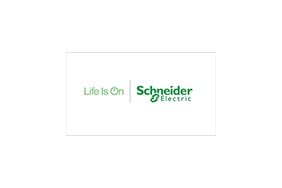Trends & Opportunities with Standardizing ESG Disclosures in Real Estate
Published 08-09-22
Submitted by Schneider Electric

Companies around the world are being pressured to provide greater transparency about their environmental, social, and governance (ESG) risks and opportunities, but the competing standards for disclosure of ESG data can often be confusing and time-consuming. With so many reporting frameworks, raters and rankers, certifications, data aggregators, and government regulations, the so-called "alphabet soup" of ESG reporting can get overwhelming. And when companies are largely left to decide for themselves which standards to report against, stakeholders’ – from employees to customers to investors – ability to assess and compare ESG performance can be very difficult.
Seeking to standardize
In response to the growing sense of "survey fatigue" from companies who are reporting to many reporting agencies, governments and reporting organizations are seeking to standardize what, where, and how companies report ESG information.
The solution to this problem seems straightforward, in theory: a universal ESG reporting mechanism that each rater, ranker, and framework plugs into for access to the relevant corporate data. However, in practice, it is much more complicated. There continues to be controversy around whether a universal reporting solution is practical or feasible, whether ESG reporting should be mandatory, and if so, how it should be implemented. Despite these lingering questions, movements in the market are signaling the eventual formation of a “universal” ESG reporting standard.
In September 2020, five of the major global reporting organizations came together to form the Comprehensive Reporting group, signaling their intent to work towards a common framework with a single set of global reporting standards. The group brings together frameworks that are referencing or building on the GHG protocol, including the Global Reporting Initiative (GRI), CDP, Climate Disclosure Standards Board (CDSB), International Integrated Reporting Council (IIRC), and Sustainability Accounting Standards Board (SASB). The goal of the collaboration is to reduce the burden on both individual reporting organizations and companies by ending the redundant and overlapping disclosures and improving accessibility for users of ESG reporting data to ensure that stakeholders can base their decisions on consistent and comparable information.
Other recent points of intersection between ESG reporting organizations include:
- CDP embedded Task Force on Climate-related Financial Disclosures (TCFD) recommendations into its climate questionnaire and participates as part of the partnership of organizations within the Science Based Targets initiative (SBTi). Starting in 2022, CDP will also include questions for corporate disclosure around RE100 commitments
- The Partnership for Carbon Accounting Financials (PCAF) and CDP are collaborating to increase financial institutions’ ability to assess and disclose financed emissions, in line with TCFD recommendations
- SASB and IIRC merged to create the Value Reporting Foundation.
- The IIRC convened the Corporate Reporting Dialogue Better Alignment Program, joined by CDP, GRI, SASB, and other participants, aimed at intensively collaborating to align on TCFD principles
- The World Economic Forum launched the Measuring Stakeholder Capitalism Initiative seeking to accelerate convergence among the major ESG standard setters
- At COP26, IFRS introduced a new International Sustainability Standards Board (ISSB) to develop a comprehensive global baseline of sustainability disclosure standards. The formation of the ISSB includes a commitment for CDSB and the Value Reporting Foundation (which houses the Integrated Reporting Framework and SASB Standards) to consolidate into the new board
- GRESB has incorporated scoring components that leverage various certifications such as LEED, ENERGY STAR®, and BREEAM
The regulatory landscape for ESG reporting is also getting busier:
- The Corporate Sustainability Reporting Directive (CSRD), launched in 2021 in the EU, is a non-financial reporting directive to introduce even more detailed reporting requirements for large companies, including an obligation for companies to digitally tag reported information
- The EU Green Taxonomy Regulation, which entered into force in 2020, introduces a classification system and performance thresholds to establish which economic activities are considered environmentally sustainable. Paired with the Sustainable Finance Disclosure Regulation (SFDR), the taxonomy requires financial market participants in the EU and companies required to provide non-financial reporting under the CSRD to disclose how and to what extent their business operations are associated with environmentally sustainable activities. The implications of SFDR will be wide-sweeping, as it is a requirement for not just EU-headquartered companies, but all financial service companies marketing products in the EU to comply
- Japan and the UK are making TCFD reporting mandatory for large companies, requiring them to report GHG emissions and other climate-related disclosures beginning in 2022
- In the United States, the Securities and Exchange Commission is taking a number of steps to enforce ESG compliance in response to investor demand for a more robust and transparent climate and environmental disclosures. This includes the formation of a task force to identify and address ESG reporting misconduct and a review of climate-related disclosures in public company filings. All signals point toward it being only a matter of time before we see ESG reporting regulation coming in the US.
The purpose of calling out these intersections between reporting frameworks and emerging regulations is to underscore the amount of work that is going on behind the scenes to attempt to streamline the ESG reporting process, both for reporting organizations and companies that disclose. All companies are advised to follow and stay up-to-date on the trend of ESG reporting standardization and the possibility of regulation. Organizations in the real estate and property investment industries in particular have a tremendous amount of value on the line that depends on ESG performance and transparency of data.
The investment community’s increasing focus on ESG for all industries is in many ways intensified for real estate. According to a 2021 CBRE survey, 60% of global investors stated that they have already adopted ESG criteria as part of their investment strategies. This is for good reason: buildings and properties have been one of the first major assets to be directly impacted by climate change. The rising frequency and unpredictability of extreme weather mean buildings are at increased risk of exposure to damage from flooding, storms, and wildfires. Investing in resilience to avoid stranded assets through analyzing and mitigating ESG risks, and then transparently disclosing those risks and actions, is a clear way that real estate owners and managers can demonstrate to investors that they are prepared for the future.
The world at large will have its eyes on the building sector as a key player in the low-carbon transition as well. With building construction and operations responsible for nearly 40% of annual global CO2 emissions, the industry has a critical role to play in combatting the social and environmental effects of climate change and pushing for net-zero emissions. Staying up to speed on the latest trends in ESG disclosure will ensure your business is prepared to meet changing stakeholder demands.
In case you missed it, Schneider Electric experts were recently joined by special guests from the commercial and investment industries to discuss how ESG is driving investment portfolios and how corporates are aligning disclosures with what is most important to them. Watch the conversation here.
This article was written by Anna Pierce, Associate Director of Sustainability at Schneider Electric

Schneider Electric
Schneider Electric
Schneider Electric is a European multinational company providing energy and automation digital solutions for efficiency and sustainability.
More from Schneider Electric

